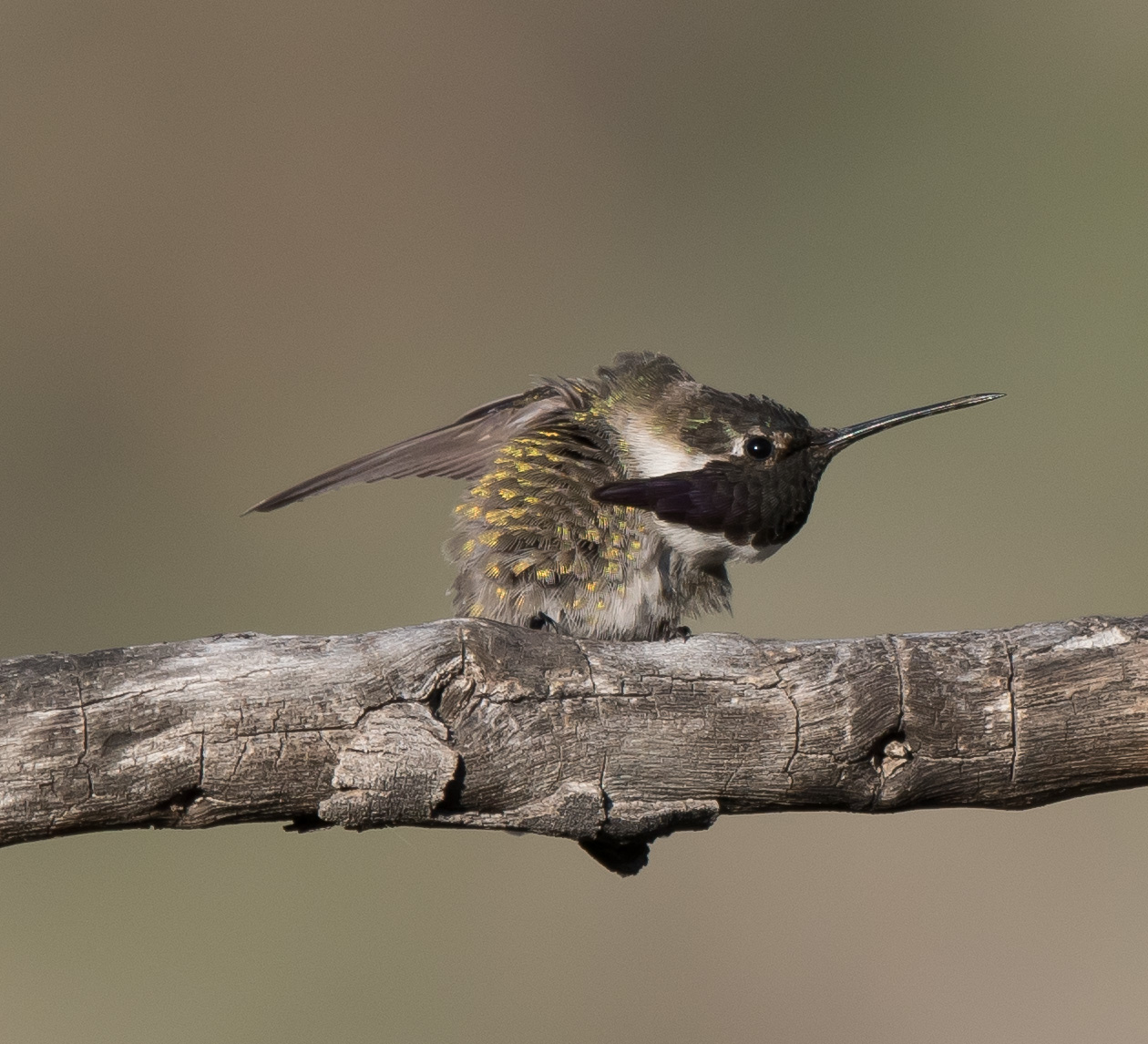Saturday night we selected the Soldier Campground for our campsite, but there were many to chose from and on Sunday we found several more that might have been a bit better selection. One of our neighbors arrived later than we and little did we know that they were much more prone to staying up late at night and were a bit noisier that what we would have liked once we retired for the night. As we gathered firewood for our campfire, we noticed that much of the wood was very wet from some of the previous monsoon rains that prevailed near the summit in the past few weeks. I am sure some of the neighboring campers were probably a bit amused at us lighting and getting our fire started, but we prevailed and had a great fire before long. We were up early and broke camp and headed out to take advantage of what little time we had left.
We headed once more to Riggs Lake, which is at the western most point and close to where the road ends and we started heading back stopping at various spots along the way. Yellow-eyed Juncos were the most numerous birds all over the top of the mountain and were seen at every place we stopped. Their bright yellow eyes in adults separate them from the Dark-eyed Junco group which consists of several sub-species. Yellow-eyed Junco is a totally separate species with a range that only extends into southeastern Arizona and extreme southwestern New Mexico in the United States.
Yellow-eyed Junco
Mountain Chickadee
Painted Redstart
Spotted Owl - Adult
Spotted Owl - Adult
We headed once more to Riggs Lake, which is at the western most point and close to where the road ends and we started heading back stopping at various spots along the way. Yellow-eyed Juncos were the most numerous birds all over the top of the mountain and were seen at every place we stopped. Their bright yellow eyes in adults separate them from the Dark-eyed Junco group which consists of several sub-species. Yellow-eyed Junco is a totally separate species with a range that only extends into southeastern Arizona and extreme southwestern New Mexico in the United States.
Yellow-eyed Junco
Yellow-eyed Junco
At Shannon Campground we ventured out on the trail that leads to Arcadia Campground for a bit. This trail is about 6 miles in length and would be a great trail to follow on a future trip. We did manage to get a Wilson's Warbler to make an appearance after Tommy heard its chip note call and then proceeding to do some pishing. I must say that Tommy has many bird calls and chip notes memorized and this talent makes for better birding as many times, the hint a birder has of a bird being in the area is one of its calls or songs.
Wilson's Warbler
Eventually the road brought us back to Arcadia Campground which was the most active spot we had the day before and it included the juvenile Spotted Owl. Almost immediately after we parked, we got out and started pishing again and this resulted in a Mountain Chickadees and a Painted Redstart making an appearance. At one point an Acorn Woodpecker actually responded to the pishing and came in to investigate. Mountain Chickadees were another species that was very numerous on our trip and seen or heard at just about every higher elevation spot.
Painted Redstart
Acorn Woodpecker
After finding the Spotted Owl the day before, we wanted to head back into the same area to see if we could relocate it again. This time it was nowhere to be found, but it could have been hanging out up in tree with better cover watching us. But shortly after this, Tommy spied another Spotted Owl higher up in a different tree and in much deeper shade and foliage. This one turned out to be an adult; most likely one of the parents to the juvenile that we located the day before. Once again the adrenaline was pumping for both of us. As usual the adult did not seem too disturbed by our presence and went about preening its feathers while we watched. Interestingly, some of the photos show those sharp talons and the feathering on the tarsus. (I swear Tommy made me use the word tarsus! He used it as we were admiring the owl and I liked it so much, decided to use it probably for the first time in a post!)
Spotted Owl - Adult
Spotted Owl - Adult
Once we returned to the heat of the valley and cell phone service, we received word of the Anhinga sighting on Dankworth Pond the day before, which had been sighted about 3 hours after we had been there. Of course we made a mad dash Back to Dankworth Pond, only to find several Neotropic cormorants and a couple of Black-crowned Night Herons, including this juvenile. No signs of the Anhinga. Oh why didn't it fly by about 3 hours earlier the day before????
Black-crowned Night Heron - Juvenile
To finish off this final post of our incredible trip to Graham County and Mount Graham itself, I will add a couple more photos of wildlife and some of the incredible scenery. Photos really do not do justice to the scenery and the incredible views that we had from the road. This place is really awesome and definitely deserves some return trips. There is much more to be explored in this area.
Squirrel - they were common everywhere on Mount Graham
Clark's Spiny Lizard - courtship display
Roseate Skimmer
Tommy keeping records
Riggs Lake





























































